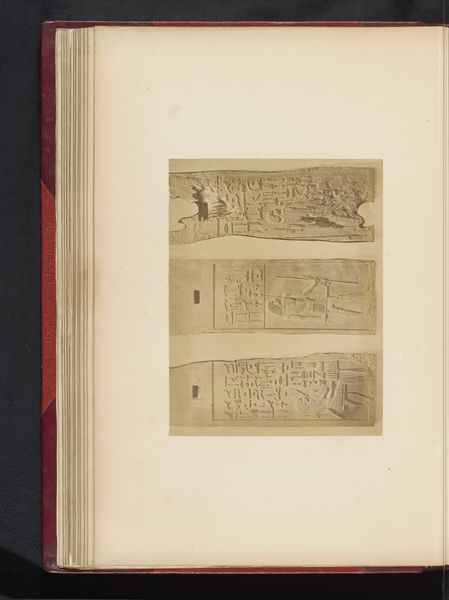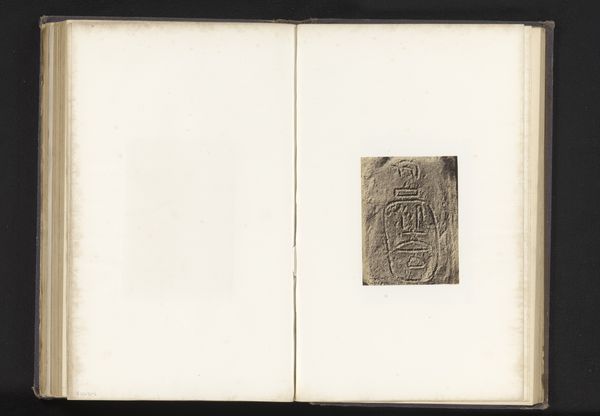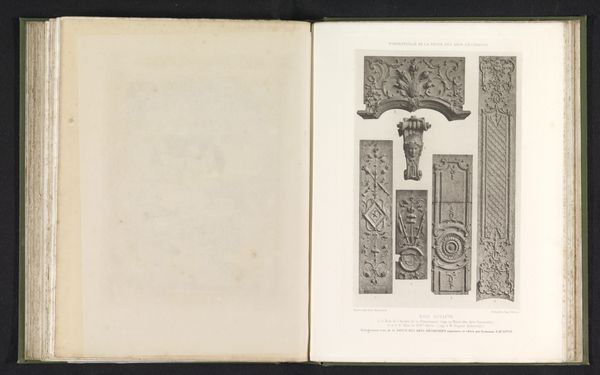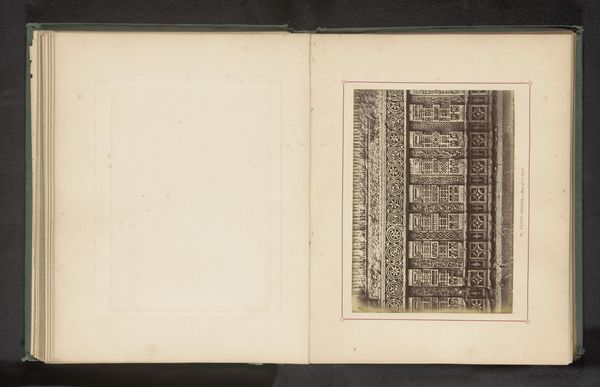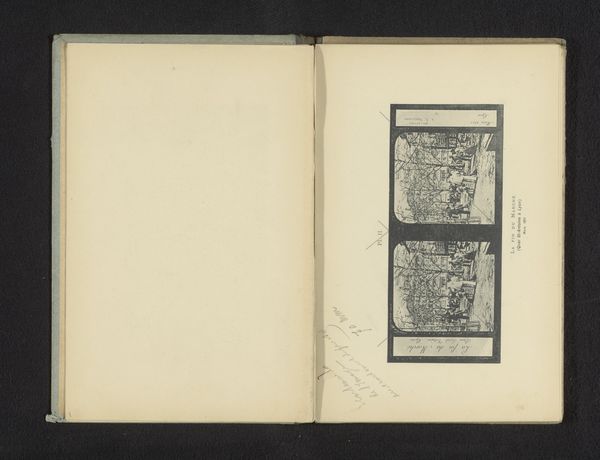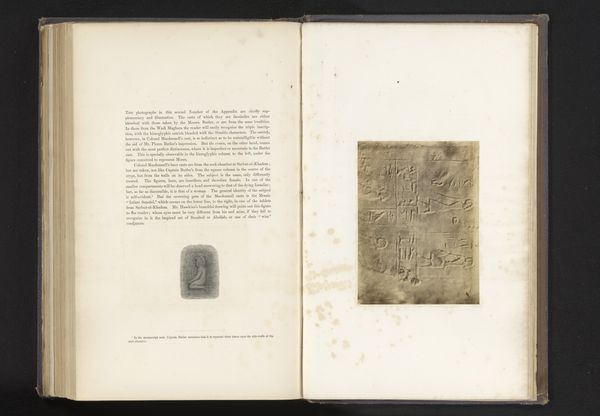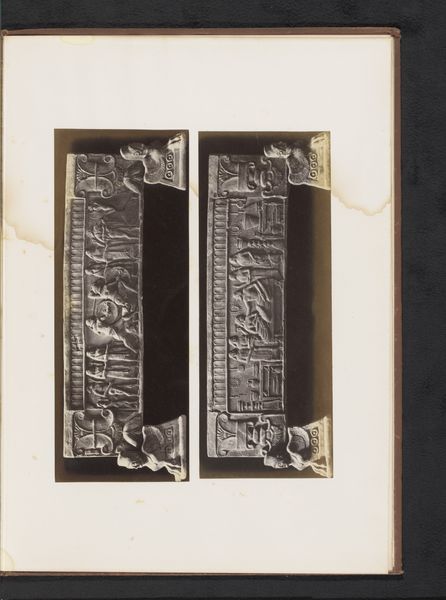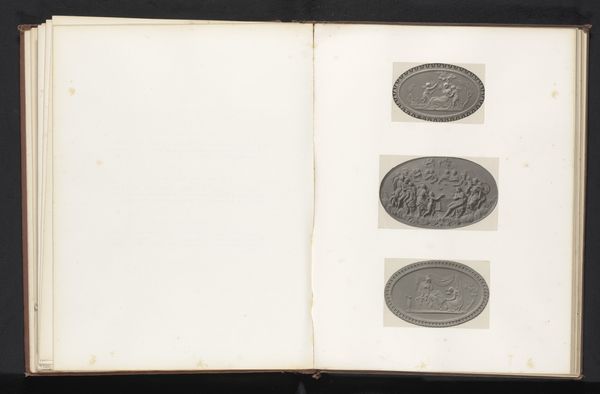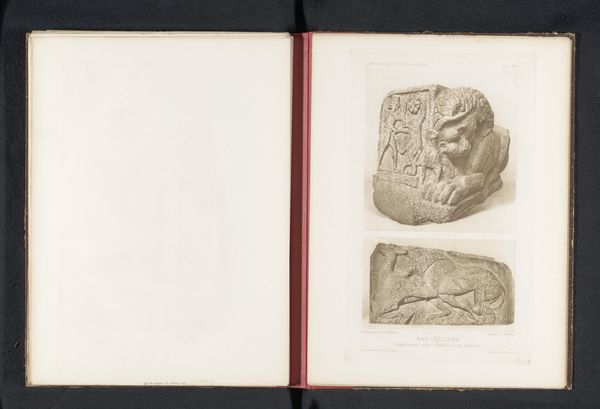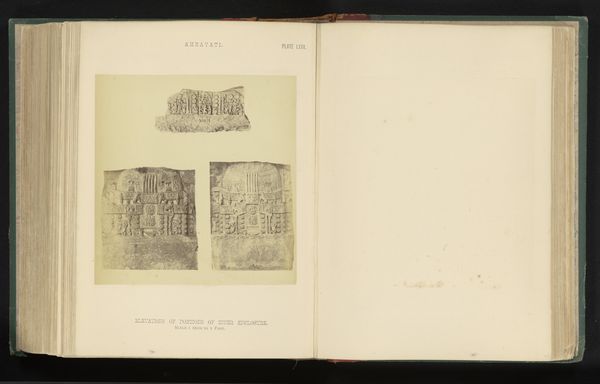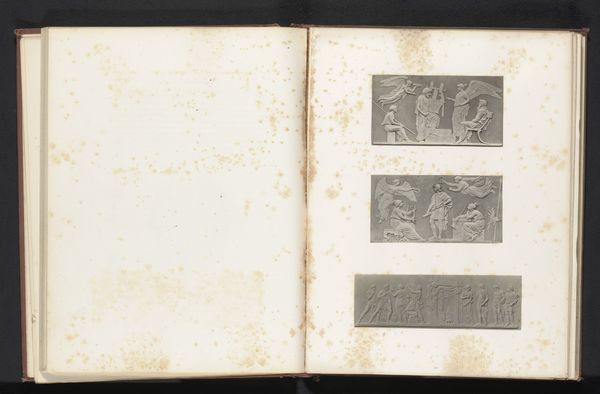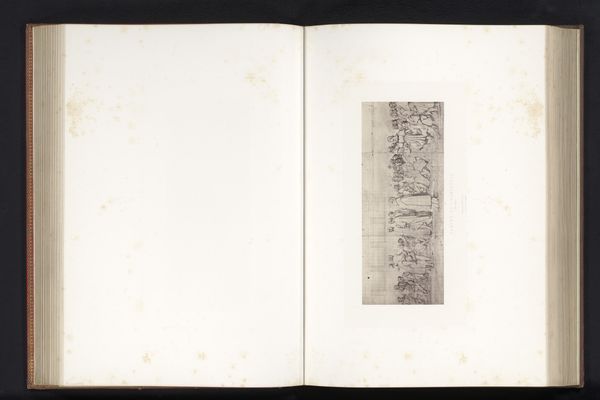
Bas-reliëfs van de Dancing hours, Apollo met vier muzen, Cupido en Bacchus before 1873
0:00
0:00
Dimensions: height 361 mm, width 270 mm
Copyright: Rijks Museum: Open Domain
Curator: Here we have a fascinating page from what seems to be Joseph Cundall's sketchbook, showcasing engravings of bas-reliefs dated before 1873, titled "Bas-reliefs van de Dancing hours, Apollo met vier muzen, Cupido en Bacchus". The printmaking is Neoclassical in style and is applied onto what looks like a page of aged, possibly homemade paper. Editor: Immediately, I get a strong sense of antiquity from this, a kind of whisper from a lost world. The faded impressions of these figures give it an ethereal quality, like ghosts dancing across the page. It looks less like a collection of prints, more like captured moments, like glimpses from an alternate plane. Curator: It's interesting you mention ghosts, because the method of producing these engravings involves a rigorous process, often tied to social hierarchies, where artisans meticulously recreate designs meant to evoke ancient glory, somewhat 'resurrecting' those cultural touchstones in a different format. Editor: Ah, but even in its mechanical reproduction, something remains untamed, no? I'm drawn to the imperfections, that slight blur to the lines, almost like tremors. And the handwritten typography to the side, thick and stylized, speaks to me of someone trying to contain this creative energy. Curator: True. And consider the economics. Printmaking made classical art more accessible, turning aristocratic ideals into commodities, which in turn changed what art was 'for'. Mass consumption transformed what was precious into something commonplace. Editor: Perhaps commonplace but certainly not devoid of magic, as the aged paper and script seem to me to offer a touch of personalization. Each copy of this page carries within it echoes of those dancing hours. One can almost see, can’t you, the artisan, hand-pressing each page in dim, candlelit rooms! Curator: The scale of production tells a different story though. Such practices involved specialized labour; engravers, printers, binders…it's important to view each sketchbook page as a small fragment within the broader printing industry landscape, in an age when "Ancient" antiquity and neoclassical style were fashionable trends. Editor: Well, to me, it represents that eternal desire to recapture a bygone era; even in its manufactured form. Doesn't this urge live on today in Instagram filters and grainy lo-fi aesthetics? A longing to feel "old," like something dug from the earth. It just sparks my imagination. Curator: Absolutely, although a modern social media trend has much different ramifications considering accessibility of the information…But regardless, it really encourages one to ponder on the labor, and historical trajectory behind the prints and its cultural recontextualization. Editor: And to me, on those figures, always circling…dancing their way through time!
Comments
No comments
Be the first to comment and join the conversation on the ultimate creative platform.
